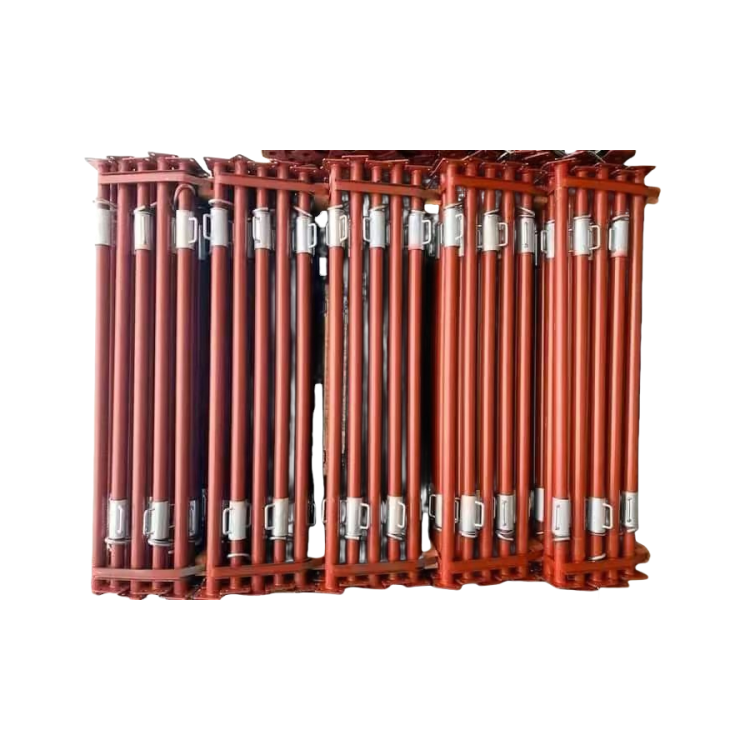
steel support
The adjustable steel support is a kind of supporting equipment widely used in the fields of construction and other aspects. The following is the relevant introduction: Structure and Composition It is generally composed of an insertion tube,...
The adjustable steel support is a kind of supporting equipment widely used in the fields of construction and other aspects. The following is the relevant introduction:
Structure and Composition
It is generally composed of an insertion tube, an outer tube, a support plate, a bottom plate, etc. The insertion tube is provided with pin holes. The height can be adjusted by inserting pins and supporting on the sliding plate. For large-scale height adjustment, the position of the pin holes can be changed, and for minor adjustments, the sliding plate can be rotated. When the length is insufficient, auxiliary supports with matching size and strength can be added.
Material
The material of the pins of the steel support has a great influence on its strength. Special pins should be used instead of substituting with steel bars and other materials to ensure the safety and reliability of the support.
Features and Advantages
Reasonable force bearing and high bearing capacity: It can effectively reduce the number of support rods and lower the construction cost. It is not restricted by the fixed plane size and can adapt to the formwork support projects of cast-in-place reinforced concrete floor slabs with different floor heights and slab thicknesses, with good stability.
Material saving and construction period shortening: Under the condition of the same formwork area, the steel consumption is less than that of the bowl-lock scaffolding and steel pipe scaffolding. It is only 30% of that of the bowl-lock scaffolding and 20% of that of the steel pipe fastener scaffolding. The vertical transportation volume of the tower crane is small, and the construction period can be shortened by about 50%, improving work efficiency.
Large operation space and easy site management: There are relatively fewer support rods on the formwork site, which ensures smooth passage for personnel and smooth handling of materials, making it convenient for site management.
Flexible demolition and less restricted by machinery: After the formwork, steel support, main and secondary beams are removed, they can be concentrated on the unloading platform for vertical transportation by the tower crane, or they can be carried back by workers through the stairs, which has a certain degree of flexibility.
Scope of Application
It is a formwork support system with relatively low cost and convenient and fast construction in various building formwork support systems. It is an ideal replacement product for the existing steel pipe fastener scaffolding, bowl-lock scaffolding and wooden brackets as formwork supports. At the same time, it is also an ideal supporting equipment for construction projects such as buildings, mines, tunnels, bridges and culverts.
Installation and Demolition
Installation: There are requirements for the spacing of the steel supports of the floor formwork. The spacing should not exceed 1.8 meters for the straight-edge slabs, 0.5 to 0.7 meters below the secondary beams, and not more than 500 millimeters below the main beams. When installing the steel supports of the floor and beams, install the supports at both ends first to ensure that they are perpendicular to the support plate and the bottom plate. When erecting steel supports on uneven concrete slabs, laying pads and filling the gaps are required, and all steel supports should be fixed to the pads and brackets with nails. When installing the auxiliary supports, ensure that the support plate and the bottom plate are flat and in right-angle contact with the supports, and fix them with bolts with a diameter of not less than 9 millimeters. The horizontal braces should be set at the upper end and the midpoint of the supports and connected in both directions at right angles.
Demolition: First, remove the horizontal braces and diagonal braces of the auxiliary supports, then loosen the horizontal braces and diagonal braces of the insertion tube at the upper part of the adjustable support. Rotate the bolt tube to lower the insertion tube and the auxiliary supports. Use steel pipes to connect the adjustable supports vertically and horizontally as a formwork removal work platform. After removing the auxiliary supports and formwork, then remove the horizontal braces and diagonal braces, and finally remove the adjustable supports.






